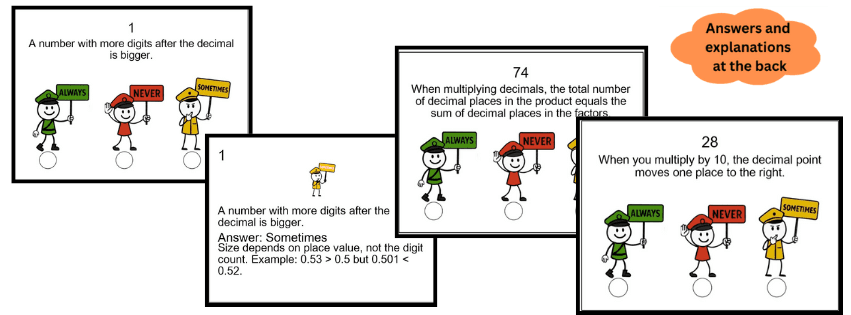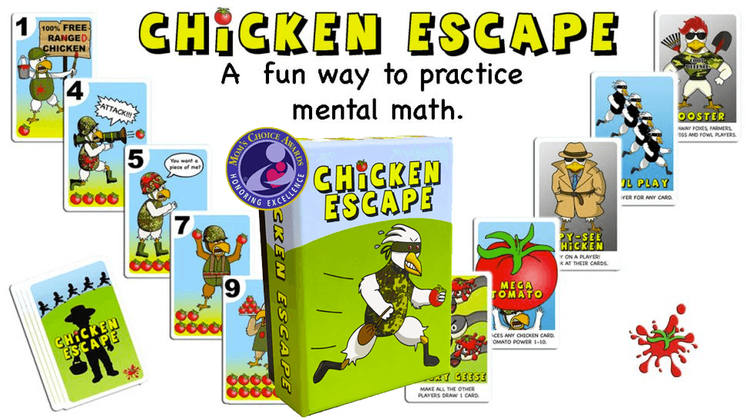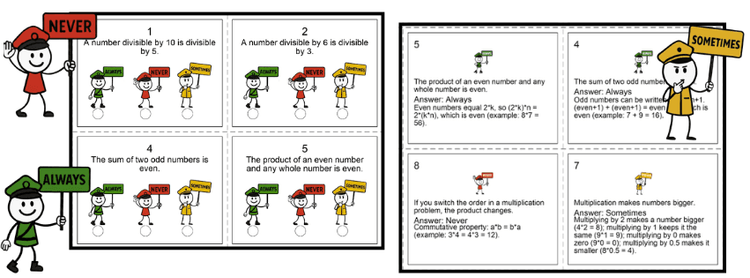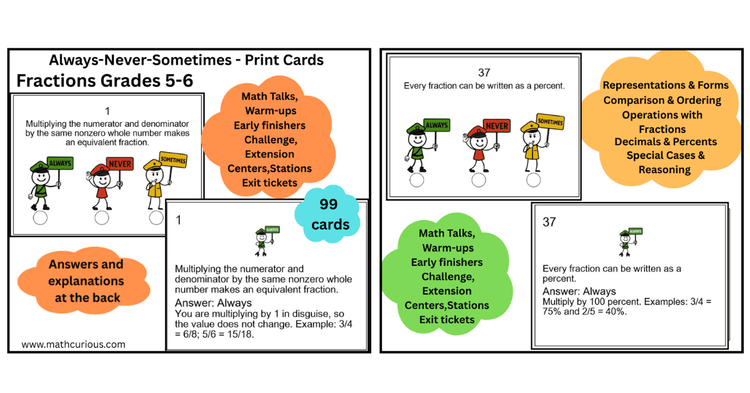Decimals: Always / Sometimes / Never — Print & Digital Resource for Grades 4–6
Looking for a rich way to build decimal sense? This print + digital set uses Always / Sometimes / Never statements to get students thinking, talking, and justifying—not just computing. It’s designed for Math Talks, Warm-ups, Centers/Stations, Early Finishers, Exit Tickets, Intervention, and Enrichment with self-check options that give instant feedback.
Why it’s useful
High-yield discourse: Students must decide Always / Sometimes / Never, then defend their reasoning. This surfaces misconceptions (e.g., “more digits after the decimal makes it bigger”) and builds precise language.
Concept > procedure: Statements target place value, comparison, rounding, operations, scaling by powers of 10, percent/decimal connections, and reasoning about size—so understanding sticks.
Instant feedback (digital): Self-check slides build confidence and reduce teacher grading load; students can iterate quickly.
Flexible & fast: Each prompt runs in 2–5 minutes—perfect for bell-ringers or discussion bursts.
Differentiation built-in: Easy to tier by selecting statements from Grade 4, 5, or 6, or using the challenge items for extension.
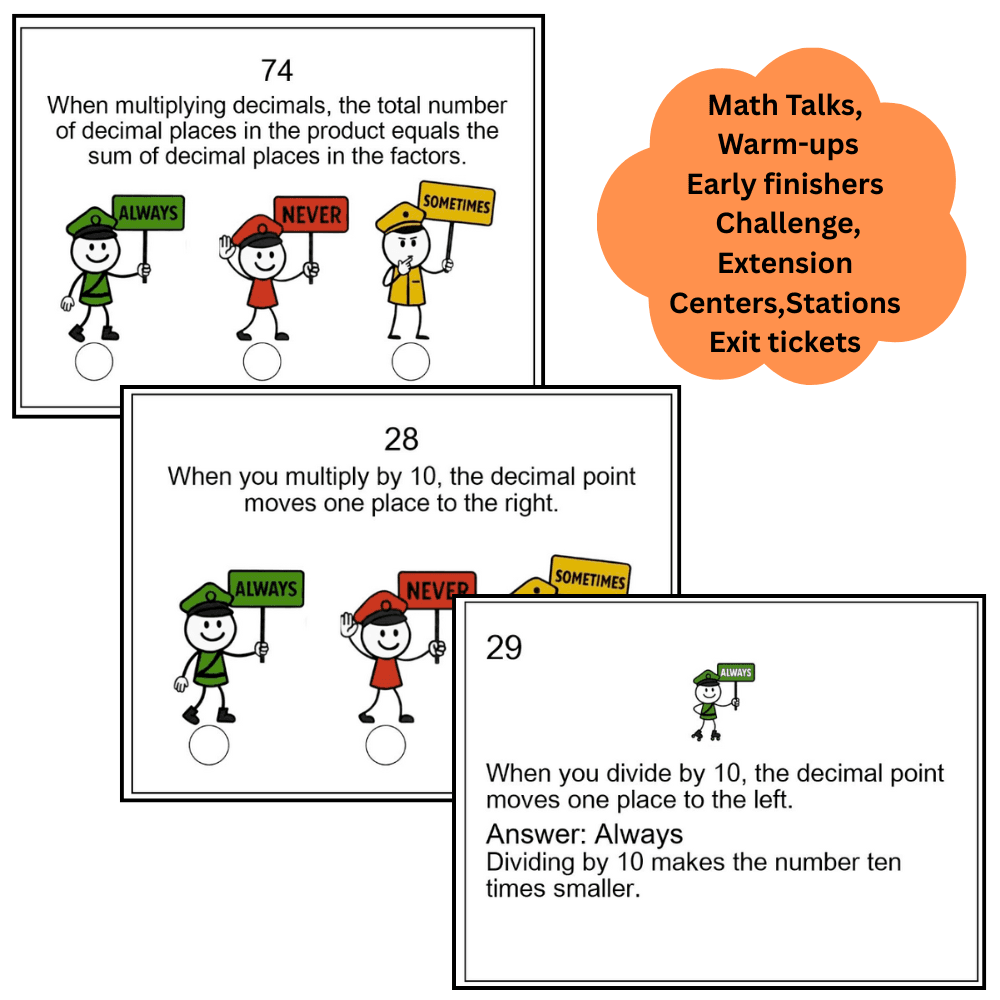
What’s included
100 teacher-vetted prompts
Self-check slide deck Question slide → Answer & explanation slide (with your Always/Sometimes/Never icons centered).
Printable task cards (optional layout): Use for centers, stations, and small-group work.
Answer keys with student-friendly explanations and examples.
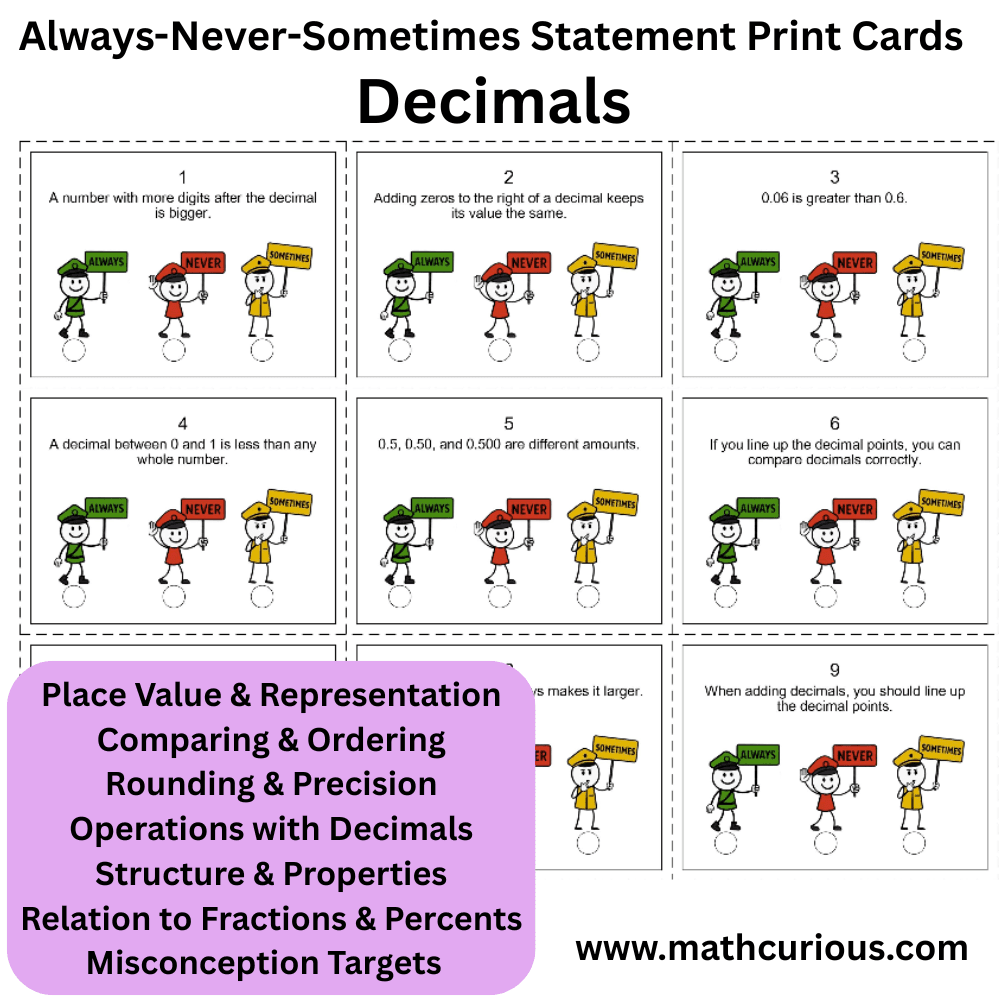
Skills & concepts covered
Place value & representation: tenths/hundredths/thousandths, trailing vs leading zeros, decimals on number line.
Compare & order: align decimal points, equalize places, money reasoning.
Rounding & estimation: nearest tenth/hundredth, tie-cases, precision.
Operations: add/subtract with alignment; multiply (place count); divide (clear the decimal; divide by <1 vs >1).
Powers of 10: ×/÷ 10, 100, 0.1, 0.01; order preservation under positive scaling.
Fractions & percents: terminating vs repeating; decimal ↔ percent; >100% percents.
Reasoning about size & sign: negatives, “part of a part,” product/quotient comparisons.
Properties: commutative, associative, distributive with decimals.
Common misconceptions explicitly targeted and explained.
How to use it
1) Math Talks (whole-class, 3–6 minutes)
Project one statement: “0.06 is greater than 0.6.”
Students vote (fingers to chest or quick show of A/S/N cards).
Turn-and-talk: “What’s your because?”
Reveal the answer & explanation slide. Ask: “What’s the key idea (place value? rounding?)”
Optional: Capture a class anchor note (“Hundredths are smaller than tenths”).
2) Warm-ups / Bell-ringers (2–4 minutes)
Start the period with 1–2 prompts.
Students write a claim + example (or counterexample).
Quick lineup: a few students share; then show the explanation slide.
3) Centers & Stations (10–15 minutes)
Print the cards OR use the slide deck on devices.
Students rotate through stations by strand (e.g., “Compare & Order,” “Rounding,” “Operations”).
Self-check ensures immediate feedback; your role shifts to conferrer.
4) Early Finishers & Choice Time
Keep a tray or device folder labeled Always / Sometimes / Never.
Students select a new card and record answer + justification + example.
5) Exit Tickets (2 minutes)
Pick one statement aligned to the day’s lesson.
Students circle A/S/N and provide one example.
Quick-sort responses to plan tomorrow’s small groups.
6) Small-Group Intervention or Enrichment
Choose items that target a known misconception (e.g., “0.203 vs 0.2”).
Use manipulatives (base-ten grids, money tiles) to model the explanation.
For enrichment, switch to challenge prompts that require counterexamples.
Print Version
Digital Version-Instant feedback
